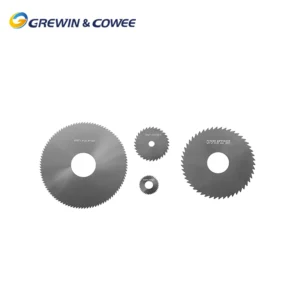Spis treści
Dźwignia kolankowaCircular Saw Blade Carbide
When it comes to woodworking or metalworking, having the right tools is essential for achieving precise and efficient cuts. One of the most critical components in any cutting tool arsenal is the saw blade. In particular, the circular saw blade carbide has gained popularity due to its impressive performance and durability. In this article, we will explore the key features and benefits of circular saw blade carbide, as well as its various applications, helping you make informed decisions when choosing the right blade for your needs.
What is Circular Saw Blade Carbide?
At its core, a circular saw blade carbide is designed to cut through various materials with ease. Unlike traditional steel blades, which often dull quickly and require frequent replacement, carbide-tipped blades are embedded with small particles of tungsten carbide. This process enhances strength and provides a cutting edge that lasts significantly longer. The longevity of a carbide blade can save both time and money by reducing the frequency of blade replacements.
The Benefits of Using Circular Saw Blade Carbide
1. Enhanced Durability: One of the primary reasons customers opt for circular saw blade carbide is its durability. For instance, a carpenter might use a steel blade for a project but finds it dulls after just a few cuts through plywood. However, when they switch to a carbide-tipped blade, they can complete the task without needing to sharpen or change the blade multiple times. This durability translates to less downtime, allowing professionals to work more efficiently.
2. Better Cutting Performance: Circular saw blade carbide is not just about longevity; it also offers superior cutting performance. The sharp edges provide cleaner cuts, resulting in less splintering and damage to the material, which is particularly important when working with finer woods. Imagine a scenario where a homeowner decides to undertake a DIY project and uses a non-carbide blade. They may end up with jagged edges that ruin the aesthetics of their project. By choosing a circular saw blade carbide, they can achieve smooth and precise cuts that enhance the look of their final product.
3. Versatility in Materials: Another appealing aspect of circular saw blade carbide is its versatility. These blades can be used on a variety of materials, including wood, plywood, laminate, aluminum, and even some metal. For example, a contractor may need to cut multiple sheets of plywood for a construction job. By using a carbide blade, they can efficiently switch tasks without worrying about damaging the blade on tougher materials.
Application Areas for Circular Saw Blade Carbide
Understanding where and how to use circular saw blade carbide can help buyers make better choices. Here are a few common applications:
Woodworking: For woodworkers, a circular saw blade carbide is essential for clean and accurate cuts. Whether you’re making furniture or crafting intricate designs, choosing the right blade type can significantly affect the quality of the finish.
Construction: In the construction industry, the durability and versatility of carbide blades make them ideal for cutting various materials on-site. Construction crews often face the challenge of working with different materials, and a circular saw blade carbide stands up to this demand efficiently.
Metalworking: Although primarily associated with wood, circular saw blade carbide is gaining traction in metalworking applications as well. As the industry shifts to more complex designs, the need for blades that can handle metal without losing their sharpness becomes increasingly important.
Guidelines for Choosing the Right Circular Saw Blade Carbide
When selecting a circular saw blade carbide, keep the following considerations in mind to ensure optimal performance:
1. Material Compatibility: Always consider the material you will be cutting. For example, there are specific blades designed for cutting laminate versus those made for solid wood. Selecting the right blade helps avoid unnecessary wear and tear.
2. Tooth Count: The number of teeth on the blade also affects the quality of the cut. A blade with fewer teeth cuts faster and is excellent for rough cuts, while a blade with more teeth provides finer, smoother finishes. For instance, a minimally toothed blade may be suitable for framing jobs while a higher-toothed blade is ideal for finish carpentry.
3. Blade Diameter: The diameter of the blade influences the depth of the cut you can achieve. Larger blades can cut thicker materials, so assess your project needs before making a purchase.
Wnioski: Dokonywanie właściwego wyboru
In summary, circular saw blade carbide presents a multitude of benefits, including enhanced durability, better cutting performance, and versatility. Whether you are a professional tradesperson or a DIY enthusiast, investing in a high-quality circular saw blade carbide can significantly improve your cutting efficiency and the overall outcome of your projects.
When shopping for a blade, carefully assess your specific needs, taking into account the materials you plan to cut and the type of finish you desire. With the right blade in hand, you will not only save time and money but also enhance the quality of your work, leading to more satisfying results. Ultimately, choosing a circular saw blade carbide is an investment in both your current and future projects, ensuring improved performance and longevity in your cutting tasks.
